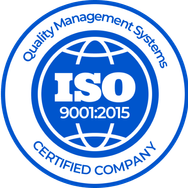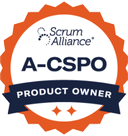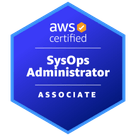Product Discovery Phase
Get assistance from our professional team to dive into the first step of the development process. Undertake all the research you need to fully scope and plan your entire digital project



Discovery phase value
Place of Discovery in SDLC
Product discovery process
- Business environment exploration
- Market investigations and research
- A detailed plan for the Discovery implementation
- Business goals and needs analysis
- Technology landscape research
- Initial list of the architecture limiting factors
- Competitor Analysis
- Creation of mood board for future concept
- Enhancing discovery plan with UX activities
- Accurate business aims and vision
- Modeled business flows
- Functional decomposition
- Defined priorities
- Checked & collected feedbacks
- Essential requirements analysis
- Limiting factors analysis
- Quality Attributes Workshop
- Architecture vision clarification
- Checking & collecting feedback
- Wireframes for core user flows (depending on the project needs)
- Concept based on mood board and feature list
- Start of the Mind Map creation
- Functional decomposition
- Fitting business roadmap and estimations
- Crucial landmarks & priorities
- Business requirements for the Roadmap
- Critical architecture views
- Finalized technology stack
- DevOps and Operations vision
- Implementation efforts estimated
- Finalized SAD (Software Architecture Document)
- Wireframes or mindmap
- Finalized UX solution vision
- Defined visual constituents and style guides
Why you need a discovery phase
Discovery phase includes
Feature breakdown list
- Project Manager
- Solution Architect
- Business Analyst
Rough estimation
- Sales Manager
- Business Analyst
- UI/UX Designers
- Software Engineers
- QA Engineers
- Solution Architect
Team composition
- Sales Manager
- Project Manager
- Solution Architect
Concept creation
- Business Analyst
- UI/UX designers
- Solution Architect
Specification
- Business Analyst
- Solution Architect
- QA engineer
Wireframes
- UI/UX Designers
- Business Analyst
- Solution Architect
- QA engineer
Detailed estimation
- UI/UX Designers
- Software Engineers
- Solution Architect
- Business Analyst
- Sales Manager
Certifications

ISO 27001
Information Security Management System

ISO 9001
Quality Management Systems

AWS
Select Tier Partner

AWS
Solution Architect, Associate

Scrum Alliance
Advanced Certified, Scrum Product Owner

AWS
SysOps Administrator, Associate
Our Clients Say About Us

CTO at NURSING
"The team is very organized, communicative, and proactive. They keep the project on track and provide excellent suggestions to improve the product."
Industry Contribution Awards
70 Reviews on Clutch
4.9

Award
Clutch 1000 Service Providers, 2024 Global

Award
Clutch Spring Award, 2025 Global

Ranking
Top AI Company,
2025 Award

Ranking
Top Software Developers, 2025 Award

Ranking
Top Web Developers, 2025 Award

Ranking
Top Staff Augmentation Company US, 2025 Award
- Project kick-off. Holding a kick-off meeting to get acquainted with the team and learn more about each member’s role.
- Feature breakdown. Business Analysts hold meetings with you to discuss user needs and functional requirements.
- Rough estimation. Developers, designers, and QA engineers estimate the feature list for the required platforms. You get a rough estimation — minimum and maximum time needed to develop each feature.
- Team composition. The Sales Manager collects the development team — developers, designers, and QA engineers. The Solution Architect and Project Manager validates the team.
- Concept creation. Designers create two visual concepts of the product for you to choose from.
- Specification. Business Analyst writes a specification covering tech aspects and describing each feature in the form of user stories.
- Wireframes. Designers start creating wireframes — a layout of a user interface.
- Final review. Quality Assurance engineers check each user story and wireframe for logic mistakes and guideline violations.
- Detailed estimation. Our developers and designers estimate the final product development cost for each platform.
- Specification
- Rough estimate
- Detailed estimate
- Wireframes
- Activity diagram
- Flow chart